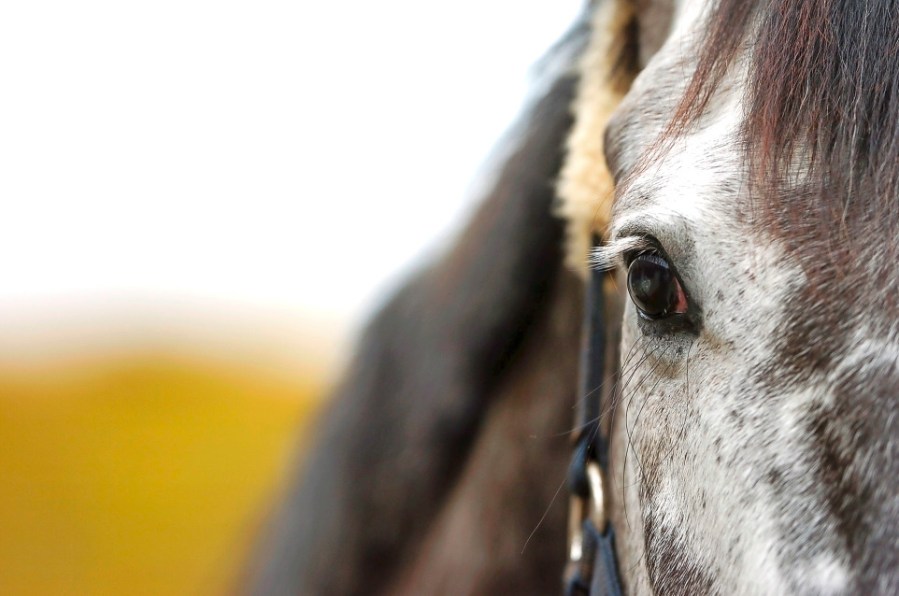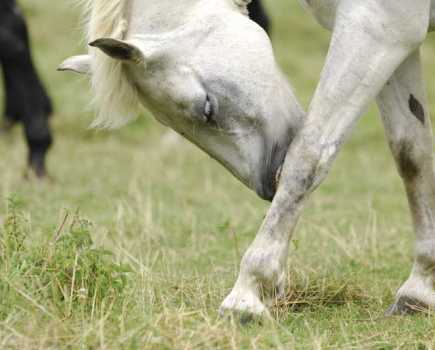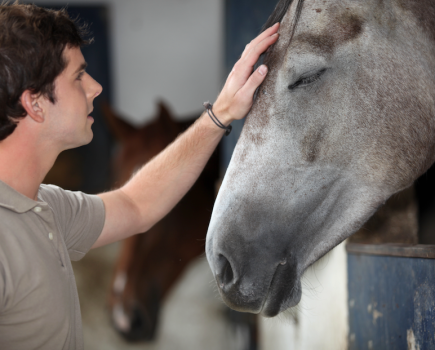Counting the number of times a horse blinks can tell us a great deal about temperament, health and learning. Dr Andrew Hemmings, head of school, equine management and science at the Royal Agricultural University, explains more.
There are some simple measurements of brain function that all horse owners can try and these tell you a lot more about your horse than you might think.
At the 2019 National Equine Forum, I reported that by counting the number of times a horse blinks we can learn a surprising amount about how his brain works, particularly structures such as the ventral tegmental area (VTA) and nucleus accumbens (NA) in the ‘reward circuit’ of the brain.
Another naturally occurring chemical called dopamine also plays a key roles in the normal functioning of these areas, and as dopamine levels increase so too does the eye blink rate.
Counting the blinks
1. Measuring anxiety…
The neurotransmitter dopamine fulfils a multitude of roles and, in particular, has a bearing on temperament. In human patients suffering from schizophrenia, elevated dopamine levels bring about anxiety and paranoia with an accompanying increase in blink rate.
In 2016, scientists counting blinks in a population of 100 horses over 300 hours revealed a similar effect: the animals who blinked more rated highly on a questionnaire-based measurement of anxiety.
2. And temperament
On the other hand, in humans with Parkinson’s disease, dopamine levels and blink rate reduce significantly. From a temperament standpoint, these individuals can become quite docile and socially removed.
A similar effect was measured in horses, in that slower blinkers tended to be calmer and more docile.
Looking to the future, it’s possible that monitoring blink rate could become a useful way of assessing temperament, perhaps as an additional stage in the pre-purchase vetting.
3. Cushing’s signs
While horses do not suffer from Parkinson’s disease, older equines are more prone to Cushing’s — or pituitary pars intermedia dysfunction (PPID) to give it its proper veterinary term.
Scientists discovered that veteran horses who develop Cushing’s syndrome blink less than disease-free control animals.
Cushing’s syndrome can be notoriously tricky to diagnose as levels of the target hormone (known as ACTH) vary, both with the season and the time of day.
So there is the potential for blink rate to become an additional tool in the veterinarian’s diagnostic arsenal.
Brain training
Have you ever heard of the game whack-a-mole? The idea is to hit the unfortunate mammal as its head emerges randomly from a series of holes.
Sometimes players try to predict the hole from which the mole will next emerge and hit too early. This is an example of an impulsive response.
On the other hand, if they get frustrated and repeatedly hit the mole following emergence, this is an example of a compulsive response.
As part of her postgraduate studies at the Royal Agricultural University, PhD student Kirsty Roberts designed a test to measure impulsive and compulsive responses in horses. Rather than teaching the horses to operate a hammer, the animals were faced with a series of three LCD screens.
At random, the screens would light up white and if the horse selected the lit screen within five seconds, he would automatically receive a food reward.
If the horse responded too early (before the screen lit up), the computer recorded this as an impulsive response, whereas repeated selection of a previously lit screen was compulsive.
The blinking link
Kirsty discovered that horses who blinked more than 21 times a minute performed significantly more impulsive and compulsive responses compared to the group that blinked 15 times per minute or less.
The ability of the horse to suppress an inappropriate response is crucial to so many aspects of horse training, and it seems as though blink rate may be able to tell us a good deal about which animals are more likely to respond in an impulsive or compulsive manner.
Look what’s inside the latest issue of Your Horse










